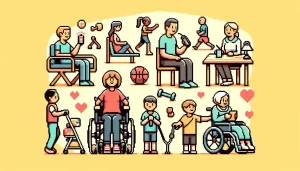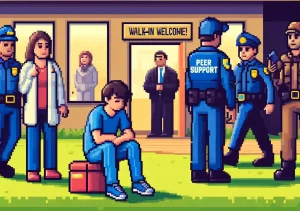
Novel Approaches to Treating Opioid Use Disorder
Opioid Use Disorder (OUD) has become one of the most pressing public health crises of our time, leading to significant health, social, and economic consequences. Despite decades of research and the development of medical treatments, overdose deaths continue to rise. The COVID-19 pandemic has exacerbated this trend, interrupting access to treatment and increasing overall substance use. It’s clear that new strategies are needed to combat this relentless epidemic.
In this blog, we’ll explore promising new approaches to OUD treatment that could potentially revolutionize the way we address this issue, including novel interventional treatments, psychedelics, neuroimmune therapies, and electromagnetic therapies.
The Current State of Opioid Use Disorder
Opioid Use Disorder is a chronic disease that affects the brain and behavior, leading to a powerful craving for opioids and a loss of control over their use. This disorder not only shortens lives but also reduces career opportunities, increases the risk of other diseases, and often ends in death. The rise of synthetic opioids like fentanyl has made the situation even more dire. Traditional treatments, such as methadone, buprenorphine, and naltrexone, have been available for decades, but they are not enough to stop the rising tide of overdose deaths.
The Need for Novel Treatments
The COVID-19 pandemic has highlighted the limitations of our current approaches to OUD. With overdose deaths at an all-time high, it’s clear that we need new strategies that go beyond the current medical treatments. These novel approaches aim to not only reduce overdoses and deaths but also to address the underlying causes of OUD and improve overall health outcomes.
Promising Interventional Treatments
Interventional treatments like transcranial magnetic stimulation (TMS) and deep brain stimulation (DBS) show promise in treating OUD. TMS uses magnetic fields to stimulate nerve cells in the brain, potentially reducing cravings and improving mood. DBS involves surgically implanting electrodes in the brain to modulate brain activity, which has shown success in treating other neurological conditions. These treatments target the brain’s reward system, potentially offering more durable and effective results than traditional medications.
The Role of Psychedelics
Psychedelic therapies are gaining renewed interest as potential treatments for OUD. Agents like psilocybin (found in magic mushrooms) and MDMA (ecstasy) have shown promise in early trials for treating a range of psychiatric disorders, including substance use disorders. These substances are believed to increase neuroplasticity, helping to rewire the brain’s reward pathways and reduce the desire for opioids. With ongoing research and potential FDA approval, psychedelics could become a valuable tool in the fight against OUD.
Neuroimmune Therapies
Neuroimmune therapies involve targeting the immune system’s interactions with the brain to treat OUD. These therapies aim to modulate or reverse the changes in brain structure and function caused by chronic opioid use. For example, anti-inflammatory medications or biologic agents like antibodies and vaccines could help reduce the reinforcing effects of opioids and promote recovery.
Electromagnetic Therapies
Electromagnetic therapies, such as transcranial direct current stimulation (tDCS) and focused ultrasound (FUS), are being explored as potential treatments for OUD. These non-invasive techniques use electrical currents or sound waves to stimulate specific brain regions, potentially reducing cravings and improving cognitive function. Early studies have shown promising results, suggesting that these therapies could complement existing treatments and enhance their effectiveness.
Why Public Health Practitioners Should Care
Public health practitioners play a crucial role in addressing the OUD crisis. Understanding these novel approaches can help inform policy decisions, improve treatment strategies, and ultimately save lives. By advocating for increased research and funding for these innovative treatments, public health professionals can help shift the focus from managing symptoms to finding long-term solutions.
Conclusion
The opioid crisis demands urgent and innovative solutions. While traditional treatments have their place, the rising number of overdose deaths shows that they are not enough. Novel approaches, including interventional treatments, psychedelics, neuroimmune therapies, and electromagnetic therapies, offer hope for more effective and lasting treatments for OUD. By exploring these new avenues, we can work towards reducing overdose deaths, improving the lives of those affected by OUD, and ultimately turning the tide on this devastating epidemic.
What do you think?
- Have you or someone you know been affected by the opioid crisis? How do you think these novel treatments could make a difference in their lives?
- What are your thoughts on using psychedelics and electromagnetic therapies as part of addiction treatment? Do you see any potential challenges or benefits?
Be a Health Innovator – Get Weekly Updates!
Stay informed and active. Subscribe for free and share this blog to make a difference in public health.
About the Author
Dr. Jonathan P. Scaccia, PhD, is a clinical-community psychologist with expertise in public health science and practice. He has led evaluation and research initiatives focusing on health equity, vaccine distribution, and organizational readiness. Dr. Scaccia has contributed to federal suicide prevention programs and vaccine equity strategies. He has been recognized for his impactful work and is a leading voice in advancing public health practices.



